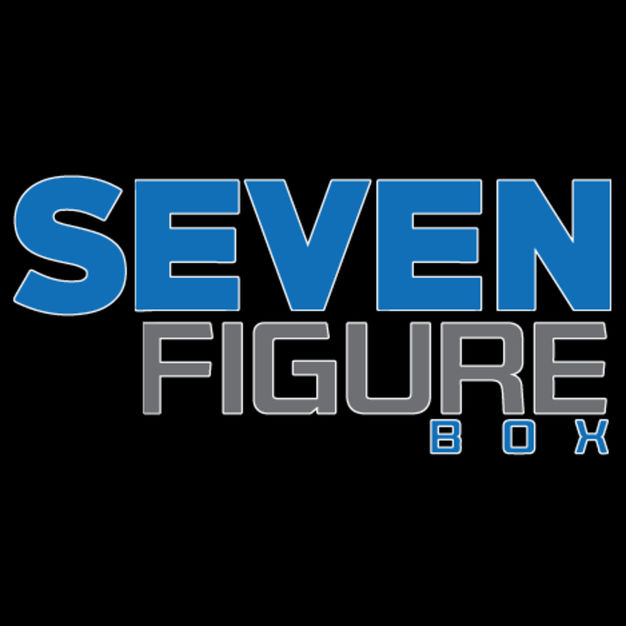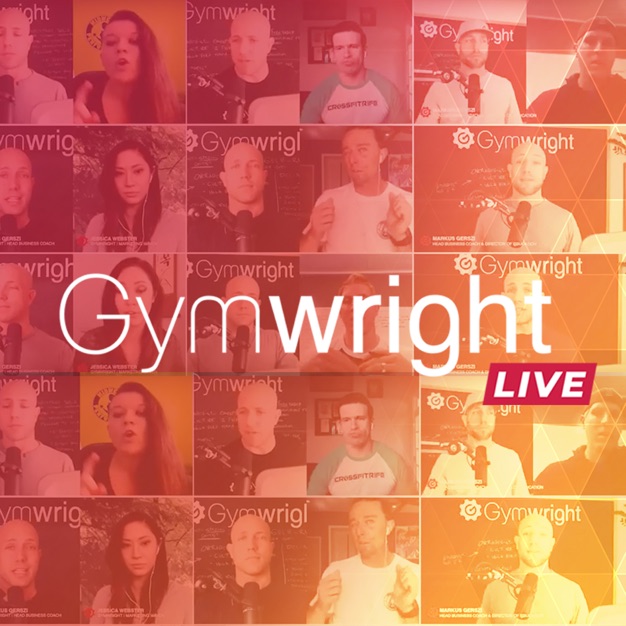
Seven Figure Box
Andrew Frezza
Strategies and tools for running a better and more profitable affiliate gym. We share our mistakes and lessons learned building CrossFit Palm Beach in Jupiter, FL into a 500+ member box. Whether you want to create a gym with seven figures of annual revenue or just your dream gym that you love showing up to each day, we can help.
- 35 minutes 44 seconds225 - The Value of Part-Time Coaches
For years, we've witnessed that one of the defining factors for treating your gym like a real business instead of a hobby, was making the transition from part-time to full-time coaches on your team.
But the right part-timers can be a massive asset to any gym business, when the aspirations, buy-in, and availability of the part-time coach is in alignment with the needs of the business.
At its essence, part-timers can provide versatility and stability to a full-time team, serving as a utility player that can allow the rest of the staff to have a more stable schedule.
For gym owners and managers, this can keep you from getting pulled back into the day-to-day, allowing you to work on your business instead of in the business.
In today's episode, we break down the potential value of part-time coaches, and what to look for when bringing them on to your team.
1 September 2022, 11:38 pm - 37 minutes 17 seconds224 - The 3 Types of Training All Clients Need
If you want to improve your 1 rep max in a lift, most experienced lifters understand that you shouldn’t max out every day.
Yet when it comes to developing well-rounded fitness, most people attack all of their workouts with the intensity of a 1 rep max every single day.
This leads to them hitting walls with their conditioning and aerobic fitness, and plateauing their skills where bad habits become ingrained instead of improved.
As coaches, we can all picture those clients who go out hot in every workout only to redline and crash, or still do the same 2-part swing on their toes to bar, or a massive donkey kick on their double unders.
The problem is these athletes are trying to “compete” every single day.
They aren't willing to sacrifice today's score for tomorrow's improvements.
They don’t realize that there’s a difference between developing their fitness and showcasing their fitness.
When we are constantly trying to compete and showcase our fitness, we’re never able to address the underlying deficiencies that are there.
As coaches, it's our job to understand these nuances, so we can educate our clients to get the most out of their daily training.
In today’s episode, we break down the difference between practice, training, and competing to help coaches map out a better plan for all of their clients to improve.
8 August 2022, 3:48 pm - 48 minutes 12 seconds223 - Ignoring Vanity Business Metrics and Going All-In on Group with Chris Thorndike of Factory Forged
What if you could streamline your gym business to only the most important parts?
What if you could intentionally downsize your gym in a way that allowed you to pay yourself more than you ever have, while restoring the work/life balance that excited you about owning a gym in the first place?
If you've owned your gym for any length of time, you understand that it's extremely common to reach member or revenue milestones with your business, only to realize that there's little to no profit at the end of the month.
For years, the common vanity metrics have been total revenue and total number of members. Anything we could do to get more members or increase revenue was promoted as a great thing, even if it didn't equate to growing the bottom line.
But there are other less-known vanity metrics like average client value, number of revenue streams, or even personal training revenue that can become distractions to a business if not approached with the right intentions.
In today's episode, my good friend Chris Thorndike is back on the podcast to talk about how to streamline your gym around group fitness classes and nothing else.
He breaks down in detail how he downsized his gym, staff, and programs by over 50% post-pandemic, while freeing up his time and growing his bottom line.
26 July 2022, 12:59 pm - 19 minutes 29 seconds222 - How to Coach the Average Joe and the Olympian by Understanding Universal Movement Patterns
On the care-coach-lead youtube channel, we've posted several videos over the last few months discussing universal movement patterns and how they can make you a better technical coach.
One example is how we look for a vertical forearm in most pushing and pulling exercises like push ups, dips, handstand push ups, burpees, and bent over rows.
Another example is what we call knuckles around the bar, which shows up in many barbell pulling exercises like cleans, snatches, and deadlifts but also in bodyweight exercises like pull ups and toes to bar.
By understanding the safety, efficiency, and transferability of these specific patterns we can become a more confident coach.
In today's episode, we discuss what universal movement patterns are and how they can be used to make athletes of all types better at what they do.
5 July 2022, 2:57 pm - 25 minutes 43 seconds221 - We're Hiring Coaches at FitTown Jupiter!
We're looking for our next rockstar coach at FitTown Jupiter!
Do you believe that coaching is your calling?
Do you love learning every day and being part of a strong team?
Do you love coaching both group classes and personal training?
Do you want to make a great living helping others and transforming lives?
In today's episode, we discuss what we look for in an ideal coach at FitTown, and how we set up coaches to thrive once they join our team.
Whether you are already coaching in another part of the country, or are a gym owner that has realized that coaching is actually your true calling, email me at [email protected] if you are interested in joining our amazing team.
1 July 2022, 4:20 pm - 34 minutes 32 seconds220 - Better scaling: How to Customize Workouts Instead of Scaling Them.
All scaling is not equal.
When a client is in the middle of a workout, rarely are they happy about regressing an exercise to make it safer or to better achieve the stimulus for that day.
It's usually not fun to take weight off the bar, switch from a barbell to dumbbells, or come off the pull up bar to perform ring rows.
But one of the things that I've learned as a coach is its not the modification that's being delivered that matters, its how and why its delivered that makes it valuable or not.
It's the difference between customizing a workout and scaling a workout.
Customizing workouts = making valuable personalized modifications before class or prior to a workout based on individualized knowledge about the client's injury history, recent training, and goals.
Scaling workouts = reactive modifications done during a workout to make an exercise more appropriate or safer for an individual.
When we scale reactively, it can make us feel like we are at odds with our clients, instead of working towards a common goal.
It turns one of the biggest values we can provide as coaches, custom modifications, into something that actually feels like a takeaway from the client's perspective.
In today's episode we discuss the difference between proactive and reactive scaling, and all of the various attributes that we should take into consideration when determining whether to scale a client or not.
29 June 2022, 3:32 pm - 37 minutes 27 seconds219 - How to Upgrade Existing Members Who Need More Than Just Workouts
What if the people who needed your help most were already part of your gym?
What if the people who were most willing to invest in themselves were already the ones who know, like, and trust you?
What if you had an extra $100k in potential annual revenue for your gym that didn't require you to bring in a single new client?
The PT Legends Dave and Scott are back on the podcast to discuss how to upgrade existing members to higher-touch, higher-ticket coaching.
For group class facilities that already have a solid membership of people who love us, one of the things we overlook the most is the ability to help these people on a deeper level.
In today's episode, Dave and Scott lay out a blueprint for ascending existing members who just show up for the workouts and community, to higher-ticket offerings that have the capacity to change their life and change their story for good.
24 June 2022, 3:17 pm - 33 minutes 18 seconds218 - Is CrossFit Finally Understanding the Needs of the Affiliate?
Since the sale of CrossFit Inc. almost 2 years ago, there's been a noticeable increase in the tools, resources, and desire to help CrossFit affiliates succeed from a business perspective.
This includes things like:
- Launching an affiliate network of brands and businesses to leverage the purchasing power of thousands of affiliates and save owners $$$
- Creating an affiliate playbook that incorporates staff and business ideas, not just training methodology.
- Launching CrossFit Affiliate Programming, and recently announcing that this would be programmed separately from CrossFit.com programming
- Partnering with Best Hour of Their Day, the first time CrossFit has ever had an approved mentorship service for business support.
In today's episode we discuss our thoughts on the recent changes CrossFit has made to their affiliate resources, and whether we believe CrossFit understands what affiliates need to succeed today and in the future.
8 June 2022, 7:06 pm - 33 minutes 6 seconds217 - The One Thing That Will Keep You from Getting Hired at Our Gym
We have a pretty thorough hiring process at our gym.
Every candidate goes through multiple phone calls or in-person interviews, fills out questionnaires, spends time shadowing classes, meeting with our team, and immersing themselves in our community.
We have had a few coaches throughout the years that have made it to the final stages of our hiring process, but we ultimately decided it wasn't a fit.
In today's episode, we discuss what would keep a coach from getting hired at our facility, and what we look for in someone that is a no-brainer to add to our team.
7 June 2022, 8:07 pm - 24 minutes 46 seconds216 - The Top Business Pitfalls to Avoid
Last month, my brother Tony and I got invited to attend the FitPro Growth Summit in Nashville, run by Tim Lyons.
Tim opened the weekend with a powerful talk about the 19 Pitfalls that Fitness Businesses Need to Avoid if they want to be successful.
Some of them that resonated most with us were:
- Focusing on more, instead of better
- Lack of balance between front-end revenue and offerings, and back-end revenue and offerings
- Low pricing, and margins too slim
- Falsely believing more leads will fix our problems
- Seeking silver bullets that will magically turn around our business
In today's episode, we discuss the pitfalls that resonated with us most from Tim's talk. We touch on many of the mistakes we've made in the past, and where we still have lots of room for improvement in our business currently.
3 June 2022, 1:53 pm - 30 minutes 20 seconds215 - How That Next Certification May Be Making You a Worse Coach
When I first started coaching, I was attending 2-3 certifications per year to develop my skills and help my clients on a deeper level.
Some of those certifications would conclusively make me a better coach, and other certifications sometimes created more client issues, not less.
The problem with most certifications I was attending, is that they were strictly focused on the technical aspects of specific modalities; kettlebells, olympic weightlifting, gymnastics, mobility, or pose running.
Every certification was focused on what to coach, but very little focus was placed on how to coach it and create buy-in with the everyday person.
So I would start nerding out on the nuances of a snatch or kettlebell swing, only to see everyone's eyes glazed over.
I quickly realized that coaching has less to do with the knowledge you have, and more to do with how you can relate that knowledge to each client and group you are working with.
In today's episode, we discuss how certain certifications could be making you a worse coach, and how you can formulate a mindset and framework that allows you to get value from.
17 May 2022, 3:00 pm - More Episodes? Get the App
Your feedback is valuable to us. Should you encounter any bugs, glitches, lack of functionality or other problems, please email us on [email protected] or join Moon.FM Telegram Group where you can talk directly to the dev team who are happy to answer any queries.
 Box Talk
Box Talk
 WTF Gym Talk
WTF Gym Talk
 Gymwright LIVE - The #1 Resource for Gym Owners and their Teams
Gymwright LIVE - The #1 Resource for Gym Owners and their Teams
 Built To Grow
Built To Grow
 Best Hour of Their Day
Best Hour of Their Day